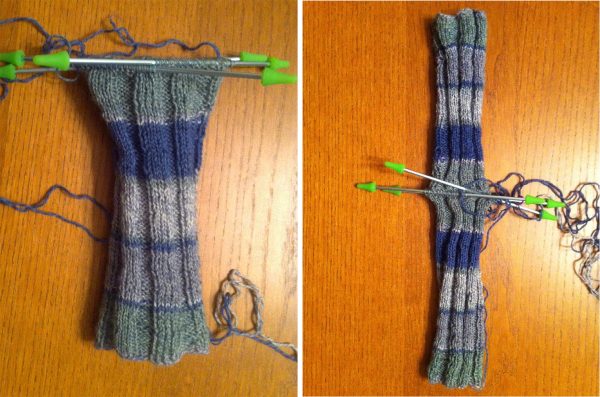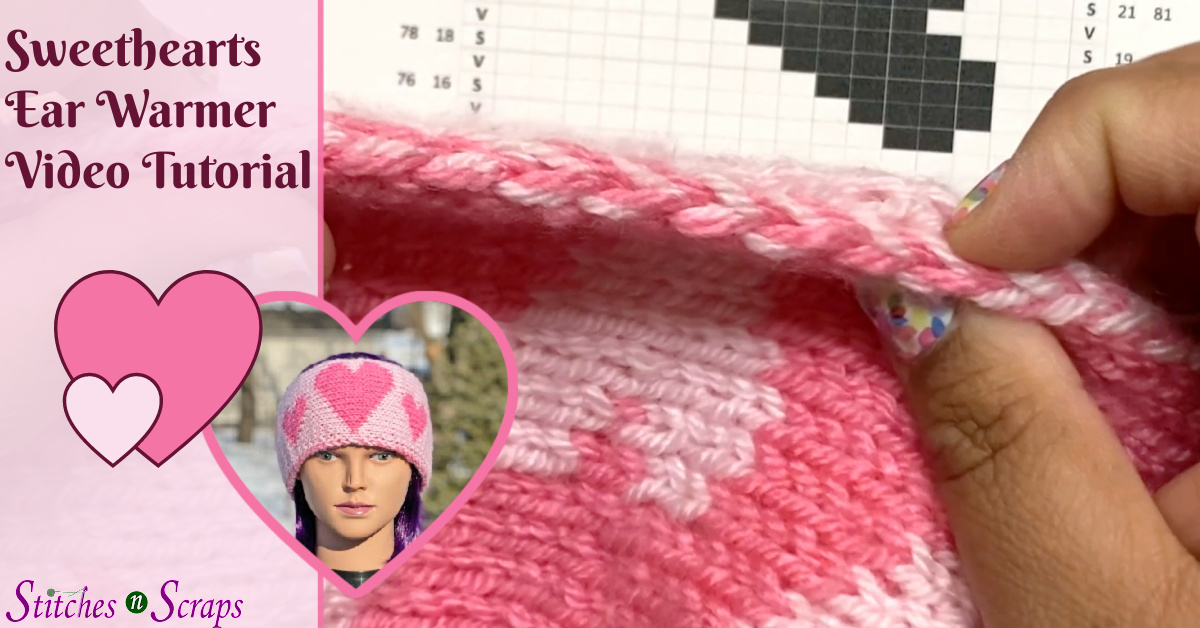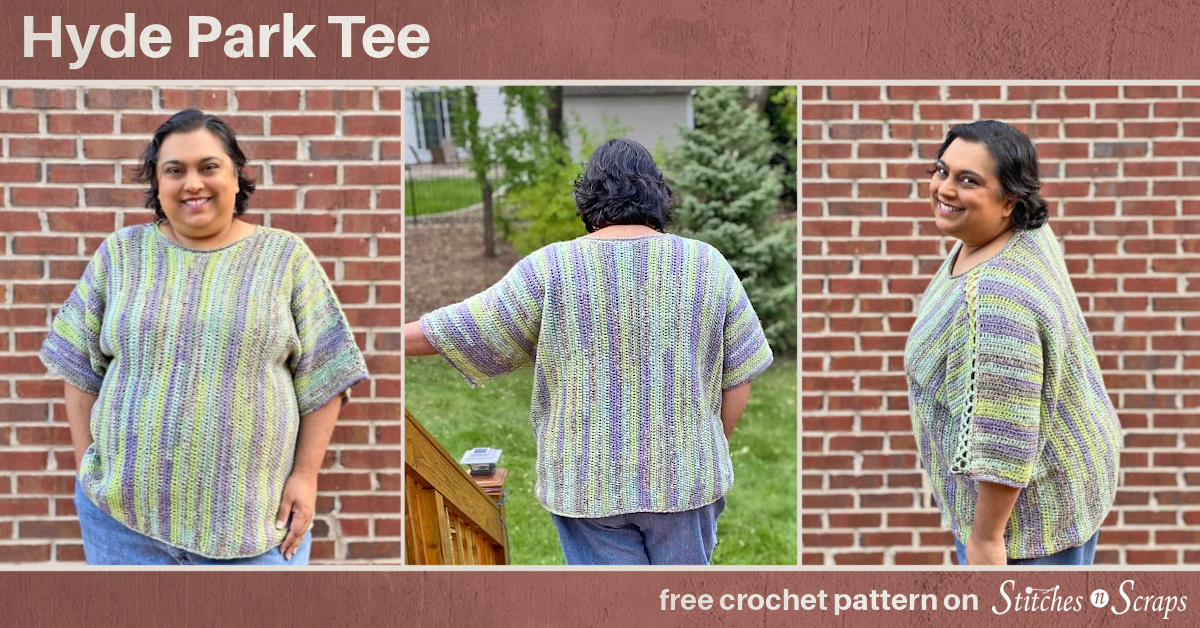Double Knitting
Knit 2 layers of fabric at once with the magic of double knitting! Learn all about how this technique works with detailed tutorials, then try it for yourself with some fun patterns.

What is double knitting?
Double knitting is a technique of knitting two layers of fabric at the same time. This is done by alternating stitches between the two layers, working one stitch on one layer then the corresponding stitch on the other layer. The layers can be joined together to create a single, reversible fabric. Or they can be kept completely separate to create 2 separate pieces of fabric.
Double-knit colorwork
Reversible colorwork like this Sweethearts Ear Warmer is one of the more common uses of double knitting.
Each layer starts with a different background color. The colors then switch back and forth between layers, creating the design. As the colors move between layers, they twist and tie the layers together for a single, double-thick fabric.
Knitting 2 separate pieces
If the yarn does not twist between layers, double knitting creates two completely separate pieces. It’s a fun way to knit 2 matching or mirror image pieces. Here is a pair of socks being knit one inside the other on double-pointed needles. Because the layers never cross, the 2 socks are completely separate.

If you knit the front layer from the right side and the back layer from the wrong side, as you would for colorwork, the pieces will be mirror images of each other. If you knit both layers from the right side or wrong side at the same time, they will be identical.
Stockinette without the curl
One of my favorite things about double knitting is that it can create reversible stockinette stitch that doesn’t curl! When the wrong sides of the layers are together, they each curl in opposite directions. They balance each other out to create perfectly flat stockinette stitch. That’s particularly useful for projects like this Lucky Hearts Coaster.
Double knitting tutorials
Learn how to double knit with these tutorials. This content is ocassionally updated, so check back for new tutorials!
Casting on
There are many different cast-on techniques for double knitting. One of my favorites is a simple, 2-color, long tail cast-on.

Other options include casting on with only one color, casting on separately with each color, or casting on provisionally and grafting the live stitches together.
Shaping
Double knitting can include increases and decreases, but it requires a bit more setup. The stitches may need to be re-arranged to maintain the alternating pattern. For decreases, this means re-arranging stitches so that all the stitches to be decreased on one layer are next to each other before working the decrease.
For increases, it depends on the specific type of increase being done. Increases like knit front and back create multiple stitches in one stitch. In these cases, work the increases first, then re-arrange the stitches to follow the alternating pattern.
Increases like yarn overs, make one, or lifted increases create new stitches between existing stitches. In these cases, simply work the increases on one layer at a time, in the alternating pattern.
Either way, the goal is to work the increase or decrease on each layer separately, and then ensure the resulting stitches are in the correct front/back layer order.
Complex stitch patterns
Double knitting is most commonly done in stockinette stitch, but it doesn’t have to be! Cables, lace, and other complex stitches are all possible as long as you keep the stitches of the front and back layers separate. Re-arrange stitches to be next to each other when needed (as for a cable or a decrease), then shift them back to the original, alternating order when finished.
Double knitting patterns
Try out your double knitting skills on these fun patterns! New patterns will be added here as they are published, so check back occasionally to see what’s new.
DK weight yarn
DK is a weight of yarn, sometimes also called Light Worsted. It’s a number 3 weight in the CYC Yarn weight system. This yarn weight was originally designed for and got its name from the knitting technique. The lighter-weight yarn is ideal for creating a dense, 2-layered fabric.
Share this Double Knitting Info Page on Pinterest!
Here’s an image perfect for pinning.

Rate this Double Knitting info page
I hope you’ve enjoyed this information about double knitting! Check back often for new patterns and tutorials.
Do you want the best of Stitches n Scraps delivered right to your inbox? Don’t miss a stitch – Subscribe now!















